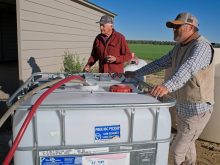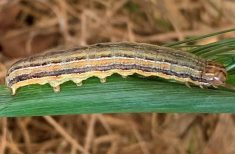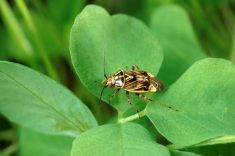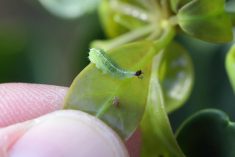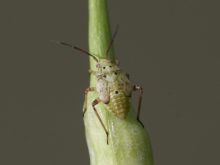Saskatchewan’s provincial pest management specialist updated growers on the current state of government regulation of neonicotinoids at CropSphere in Saskatoon in January. He began with a review of insecticide modes of action.
Just as herbicides are classified into groups according to how they control weeds, insecticides are classified into groups based on how they control insects. The 30 major insecticide groups are governed by the Insecticide Resistance Action Committee, a group that’s been in place since 1984.
Resistance comes from overusing one mode of action. When one mode is used too often, changes may place within the insect population allowing insects to avoid damage, or insect populations may change their behaviour to avoid damage from that particular mode of action.
Read Also

Cancer agency reclassifies another herbicide ‘probably carcinogenic’
The WHO’s cancer research agency has now put atrazine, a herbicide well known to corn growers, in the same potential-hazard category where the agency put glyphosate.
Tansey pointed out that after the introduction of all major chemistries, resistance has appeared two to 20 years later.
Most insecticides, Tansey said, are neurotoxins — chemicals that target insects’ nervous systems. There are a few exceptions.
Some chemicals are insect growth regulators. These include chitin synthesis inhibitors that impact insects’ exoskeletons. Insecticides in this category tend to be fairly slow acting, and most effective on juvenile insects.
Other types of insecticides are energy inhibitors that interfere with mitochondrial respiration. “These tend to be moderately fast acting,” Tansy said.
Dehydrating dusts are another category. These insecticides interfere with the wax that covers insects’ exoskeletons, scraping it off so that the insects dehydrate. “If they dehydrate, they die,” Tansey said. These are slow-acting chemicals.
As well as the 30 groups, there are also subgroups within many groups (like 4A and 4B). “Functionally,” Tansey said, “the number is the most important.”
Tansey highlighted a few examples, including Group 1.
Insecticides in Group 1, he said, “are cheap and plentiful for the most part.” And also very effective. The Group 1 chemicals we’re probably most familiar with are chlorpyrifos (Lorsban) and malathion.
Using neonicotinoids?
Neonicotinoids are in Group 4A. Neonicotinoids include active ingredients thiamethoxam (Helix, Cruiser), and imidacloprid (Admire, Alias), acetamiprid (Assail), and clothianidin (Prosper, Poncho). Group 4A products are the products we use to control flea beetles in canola, pea leaf weevil in pulses and wireworm in cereals.
After insects have been sprayed with Group 4s, all their neurons fire and they generally die. Wireworms are an exception. They are not typically killed by Group 4 insecticides, but instead suffer from a narcotic effect. “It tends to make them dopey for a year,” Tansey said. This narcotic effect limits wireworm feeding, so it is still effective in limiting yield loss.
Canada’s Pest Management Regulatory Agency (PMRA) has “taken a slightly dim view on some of the neonicotinoids,” Tansey said. Neonicotinoids have been subject to a special review in all OECD countries, based on worries that they may be affecting pollinator (bee) health.
“Health Canada’s review on pollinator health indicated that seed treatments do not cause a significant risk to pollinators,” Tansey said. That was a final decision from Health Canada. However, outcomes of that study triggered a “secondary special review,” when there were indications that some neonicotinoids may pose a risk to aquatic insects.
The PMRA may deregulate some of these neonicotinoid products. A stakeholder group that includes provincial governments and grower groups is still considering data. The Government of Saskatchewan has submitted new data that indicates that the tested levels of chemicals that would affect these aquatic insects are actually very low.
Although it was expected in January 2020, the PRMA’s final decision has not been issued.



